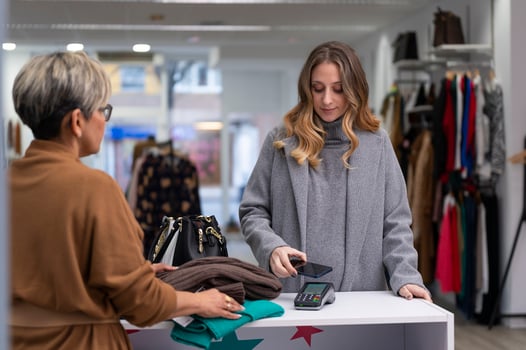
The breakneck rate of change in the digital payments space over the last decade has set the stage for a new concept: the Payments Platform as a Service.
The EMV liability shift in 2015 monopolized much of the industry’s time and attention, but insiders knew a whiplash would follow to catch up with tech advancements. Contactless payments were already on the radar when the U.S. flipped the switch for EMV, and brick-and-mortar shoppers were increasingly evolving into omnichannel consumers.
According to McKinsey, one-third of Americans have made omnichannel processes such as buy online, pickup in store (BOPIS) a regular part of their routines. They demand convenient, secure ways to pay online. The omnichannel payments platform ascended, giving merchants a way to manage payments everywhere consumers engaged. At the same time, fintechs entered the space with alternative payments and services.
The logical next step is to make all payment methods available everywhere.
Hurdles to Unlimited Payment Method Choices
It’s relatively easy to allow consumers to pay as they prefer online, connecting cloud-based services with their cloud-based environments. Shoppers can use tokenized credit and debit card data to pay their purchases – often using one-click ordering in low-friction checkout experiences. Some e-comm merchants facilitate peer-to-peer (P2P), buy now, pay later (BNPL), and automated clearing house (ACH) payments to give their customers options and to reduce shopping cart abandonment. E-commerce businesses that know their customers know how to create the payment experiences they want.
Historically, though, it’s not been as easy to enable all of those payment methods in-store. A customer who has frequently taken advantage of BNPL online, for example, may find they can’t if they shop in person. It can be a challenge to accept alternative payments efficiently and securely in a card-present environment using existing in-store payment technology and processes.
However, offering consistent payment experiences is becoming more important. A study by Mercator Advisory Group found that 13.5 percent of consumers now use the same payment method wherever they shop.
The Payments Platform as a Service Approach
An innovative solution is the cloud-based, API-driven “as a Service” approach to payment, which creates more flexibility at the point of interaction. It enables the merchant to choose from a catalog of traditional payments, alternative payments, and payment services to craft experiences that meet their customers’ expectations.
It’s possible to use a Payments Platform as a Service solution connected with a broad network of acquirers and gateways to accept mobile wallets and alternative payments as well as credit and debit cards – and no additional certifications are needed. Merchants can also add BNPL, tokenization, and fraud management services from the Payments Platform as a Service dashboard.
Think of it as a co-op of sorts. Each member can provide value to customers on their own. But together, they can provide exceptional experiences, meet diverse needs within the market, and ultimately capture more sales. A Payment Platform as a Service solution can give merchants a powerful tool to pull together a range of payment options that do those same things at the checkout.
It Doesn’t End There
Payments Platform as a Service has the potential to enhance experiences beyond the checkout counter. It can also lay the groundwork for enhanced CX when restaurant customers pay at the table, on their smartphones, at unattended fuel stations, and at electric vehicle (EV) charging stations. When the terminal is connected to a comprehensive network of payment solutions and services, consumers can pay the way they prefer.
Change in the payments space isn’t slowing down. Payments Platform as a Service is the onramp to keeping up with change.
To learn more, contact Ingenico.
Erica Eby is Head of Business Development at Ingenico, a Worldline brand.
Photo by freestocks on Unsplash










